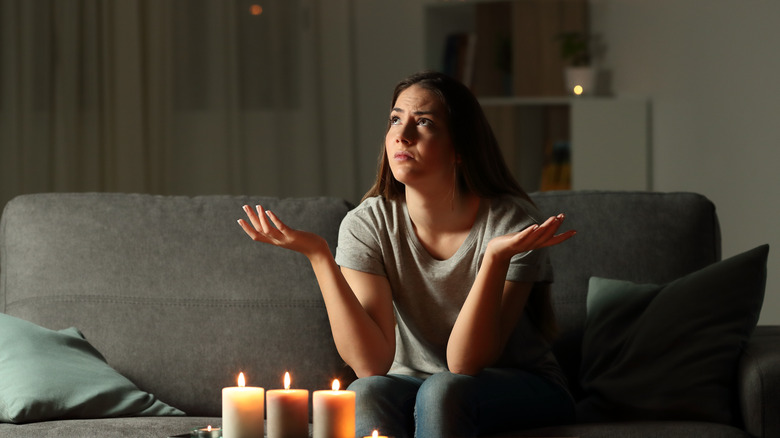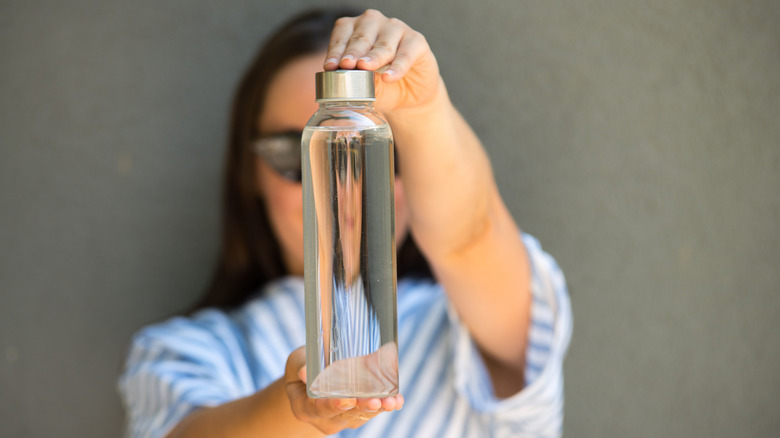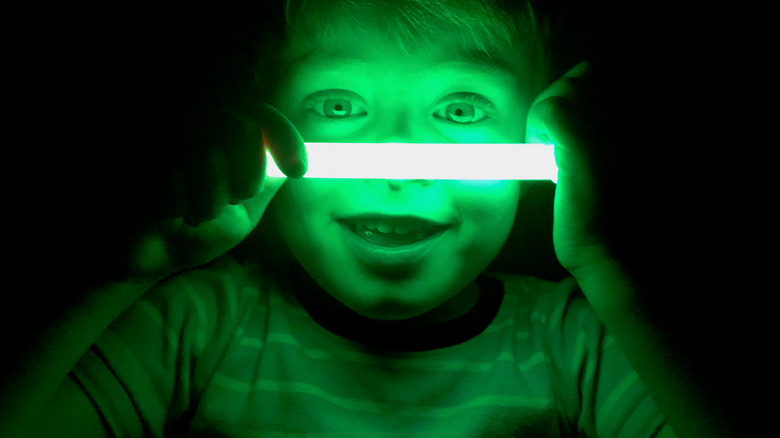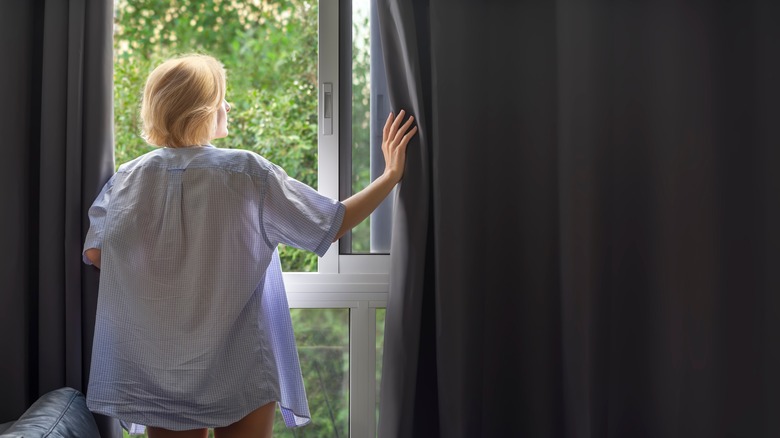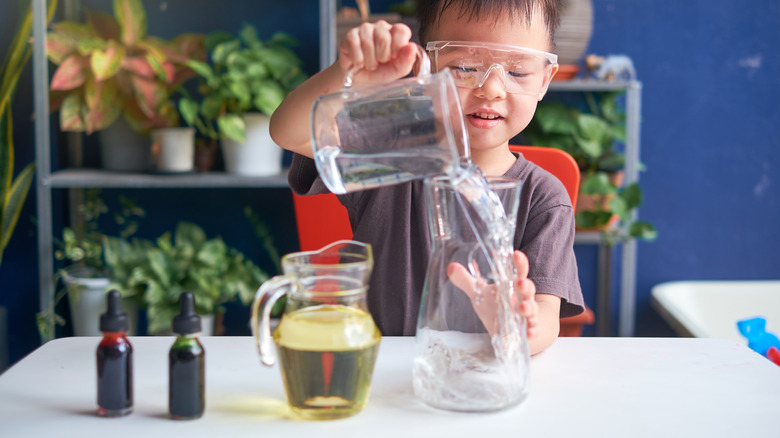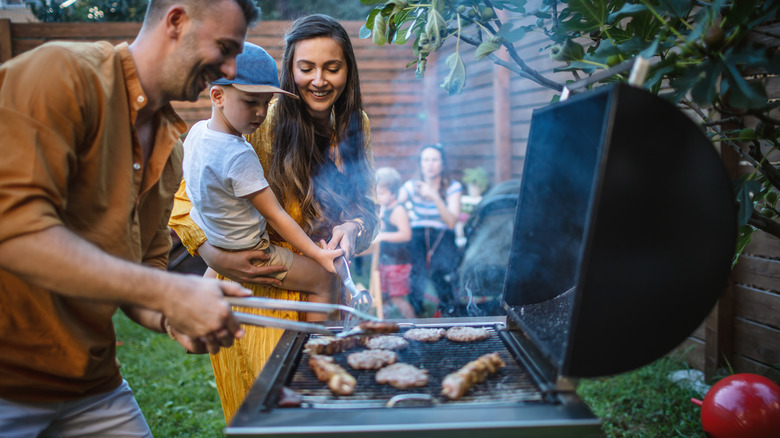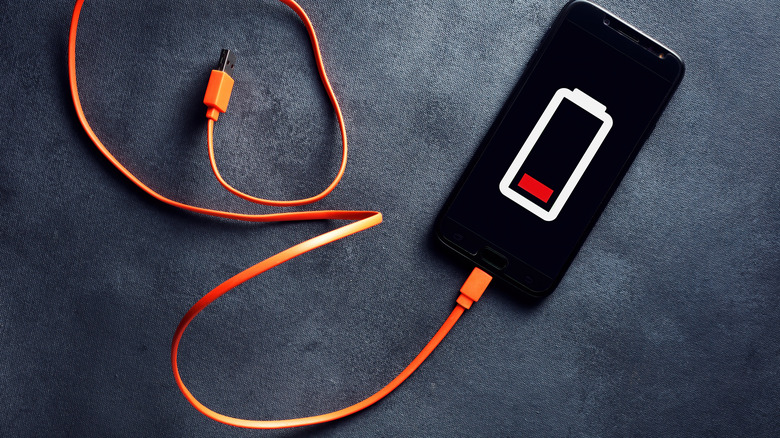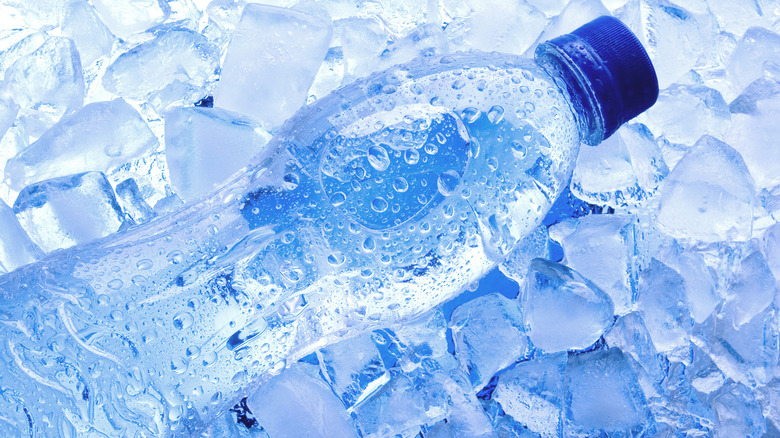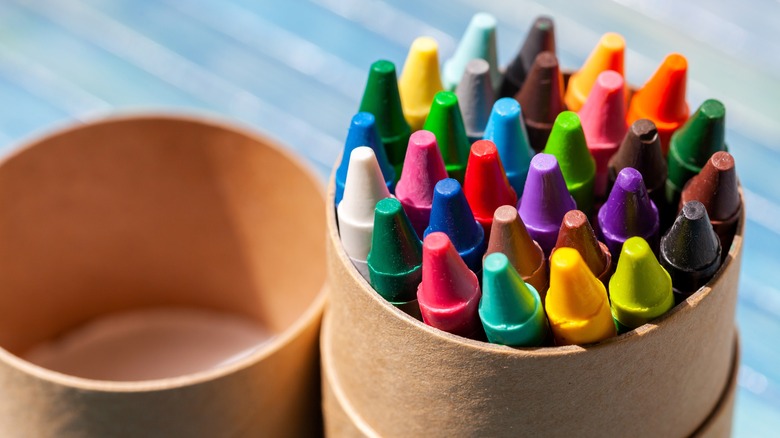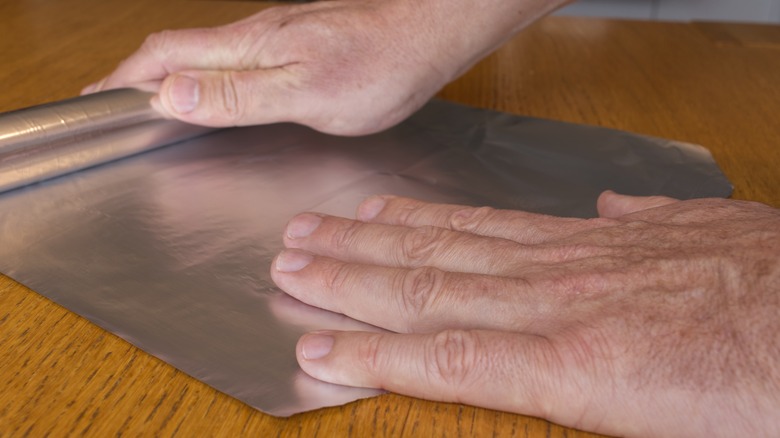Genius Hacks You'll Want To Know During Power Outages
When you have a power outage, the situation can go from a minor inconvenience to stressful quite easily. Although reaching for flashlights and candles is common, you have better ways to get through a blackout. Instead of scouring the internet for common tips to help you when the power goes out, you want to think a bit outside the box for hacks that could make your life a lot easier while you wait for your power to switch back on.
Instead of the usual "have a flashlight ready" or "have a battery stockpile," we're going to focus on other practical solutions using things most people have lying around their house. Think about fun ways you could make your own light source, how you'll keep your food cold when the refrigerator stops working, and how to stay connected. These hacks will help you address all of these problems when you have a power outage, and they don't require special tools or a lot of prep work to get them up and running.
Being prepared with these hacks means reducing the disruption to your routine, avoiding unnecessary expenses like replacing spoiled groceries, and staying safe until you have power again. In short, these are the hacks you wish you knew in previous power outages. Let's get into it.
Create a water bottle lantern
A water bottle lantern is a simple, but creative, way to get light using everyday items. This hack takes a clear water bottle and turns it into a light source using a phone light, headlamp, or flashlight, as it amplifies the beam of light they emit. This is a lightweight, portable lantern that is easy to make, and you can place them in different rooms.
To make it, get a clear plastic bottle, pitcher, or glass and fill it with water, leaving an inch of room or so at the top. If you want to keep the water clear longer, add a drop of two of bleach to sanitize it. Put the container of water right on top of your light source, ensuring the light is in the center. The water will diffuse the light to create a soft glowing lantern. You may need to adjust where you place the light in order to get the most light dispersion possible.
Use glow sticks for safe lighting
Glow sticks are something you may not think to use at a light source, but they're great when the power goes out. These are small plastic tubes with a watery substance inside, and they'll start glowing when you crack them to give you a small point of light. The safety factor is one of the main reasons you'd keep them in your emergency pack. What's great about them is that glow sticks stay cool even when activated and glowing, so you can set them around the house and leave the room without worrying about them tipping over and catching fire.
To use glow sticks to light up parts of your home, find ones in your desired size and color. Bend it until you hear a cracking noise, as this tells you that there was enough pressure to break the inner tube. The chemicals in the tub will mix and start the glowing reaction. You can then tie, hang, or put them strategically around the room to illuminate it.
DIY thermal curtains or door insulation
While traditional thermal curtains are worth the hype, you can DIY some to help insulate your doors and windows from the cold or heat. You'll want heavy fabric or ones with reflective liners to help trap the temperature in the room when you have them in place. The biggest benefit is that they'll help keep your home cooler during summer and warmer when temperatures dip.
To make DIY thermal curtains, you'll need heavy fabric, reflective insulation or fleece, scissors, and a sewing kit. Start by measuring your doors or windows to see how large you need your pieces of fabric to be. If they're bigger than the door or windows you want to insulate, cut them slightly larger than your measurements (10 inches wider and 6 inches taller) and hang them using double-sided tape or Velcro. In a pinch, stapling them up works too. If you have fleece, hang your first layer of fabric, then a layer of fleece, and then a second layer of fabric to insulate your doors and windows even more. Even if you don't have them up permanently, these DIY thermal curtains are great to have on hand and ready to use.
Make a homemade oil lamp
Making a homemade oil lamp is a good way to get a sustainable light source by repurposing vegetable oil and things you have around the house. As a bonus, oil lamps give you a steady light source that you can pick up and walk around with, lighting up your space as you go. Using vegetable oil as fuel is safer because it produces less soot due to its higher burning point, so it's healthier to burn indoors. You can use it to recycle kitchen supplies and reduce waste too.
To tackle this project, you'll need vegetable oil, a small jar, a paperclip or washer, and a cotton wick. If you don't have a wick, twisted paper, a cotton string, Q-tip, or shoelaces also work. Fill the jar with vegetable oil, stopping roughly an inch from the top. Thread the cotton wick or whatever you're using through the washer or paperclip to weigh it down and center it in the oil. Let the wick soak up the oil for a few minutes until it's saturated to get a smooth burn and light it when you're ready. The oil fuels the fire, giving you a warm glow. If you use shoelaces or something that can't stand up by itself, you'll have to attach it to the side of the rim to keep it upright as it burns.
Use safe heat sources
When the power goes out, using safe heat sources to cook and stay warm, like grills and fireplaces, are an efficient way to meet your needs without putting yourself in unnecessary danger. Grills, either charcoal or gas, give you a solid way to cook outside, and this makes them great to have during power outages. Fireplaces work as a temporary to permanent supplement heat source when it gets cold out, as they give a traditional flare with a hands-on approach to tackling the problem of no power.
Put your grill in a well-ventilated, open spot away from your home to reduce any fire hazards and allow the smoke to freely escape. For charcoal grills, light the briquettes and let them burn until they have a light gray ashy layer. This layer tells you they're hot enough to cook with. For a gas grill, ignite the burner after you check to ensure the grill and tank's connection is secure. Your fireplace chimney has to be clean to let smoke escape. Once it is, open the damper or flue before lighting the fire and get seasoned, dry wood, because it burns cleaner. Stack the wood in the fireplace so air can circulate and light it from the top to reduce smoke. But sure to closely monitor it, feeding more wood as needed.
Charge your phone using your car battery
Using your car battery to charge your phone is a great hack when you can't use traditional power sources to get the job done. It's helpful, as it gives you a steady power source without having access to the grid, making it great in emergencies. It's also simple to implement, because you don't need any special tools or equipment to use it. By using your car's battery, you can save your other power sources for different needs or future times. This makes it an efficient, practical way to ensure your phone is charged and ready to go.
To get your phone battery up to 100% charged with this hack, you'll need a charger adapter or cord that fits into the designated charging port or cigarette lighter socket. Move your car to a safe spot and run the engine for at least a little bit, so you can charge up the battery. Now, just plug your phone in and get to charging. You just turn just the battery on and not the car engine, but note that this depletes the battery much quicker.
Store water bottles in the freezer to keep refrigerated and frozen foods cold longer
Having to deal with a lot of refrigerated and frozen food that will go bad if thawed can be a cause for concern when the power goes out. The good news is that putting frozen water bottles around and on your food will keep it safe. This hack may be used again and again, doesn't make a mess like regular ice does, and lets you keep the doors closed longer so you don't have to open them all the time to add more ice. Because you can use the frozen water bottles more than once, they are better for the earth than disposable ice packs.
Fill a few empty plastic containers about 2/3 of the way to the top with tap water. You want to leave space for the water to expand without damaging the bottles. Twist the cap on and put them into your freezer until they freeze solid. When the power goes out, strategically place the frozen bottles around the items in your fridge and freezer. Ideally, you'll want them to have direct contact with the food for the best results. For bigger coolers or freezers, set several frozen water bottles on each shelf, keeping them nicely packed to cool the larger space and stop warm air circulation.
Make a crayon candle
While many people decorate their homes with candles, if you don't have one handy, you can use a crayon for light. Once your kids use their crayons to the point that they're too short for them to color with, or if they break them, you can repurpose them instead of tossing them out. You can even get the kids involved and help them make their own crayon candles. As a bonus, crayons are compact and lightweight, and you can easily pop them into your emergency kit and use them as a light source when the power goes out. You also reduce waste by saving and reusing crayons instead of throwing them away.
To make a crayon candle, you'll need crayons, a lighter or matches, and a stable, fireproof surface to set them on. Set your crayon onto the surface and light one end. You want the wax to start melting so you can flip it around and press it into the base. Once the wax hardens, this will anchor your crayon and reduce the risk of it falling over and burning anything. When it's ready to go, light the other end and let it burn. The fire will give you a small and steady light source. Nitro-Pak notes that a single standard-sized crayon will burn for roughly 30 minutes. Also, you never want to leave the burning candle unattended, as it's obviously a fire hazard.
Use aluminum foil for emergency light
This aluminum foil flashlight hack is a great way to get light during an emergency, due to a few different reasons. First, it can reflect light, and second, it's conductive. This means that you can use it to reflect any other light sources you have in the room, like candles or flashlights, by putting sheets of aluminum around the light source. If your flashlight refuses to work, you can also use a small square of aluminum to get it back in good shape to light your way.
For the first option, you'll need a working flashlight or other light source, like a smartphone or candle. If you're using a flashlight or candle, carefully shape the foil into a cone shape behind the light to reflect the light forward, allowing it to brighten up a bigger space. You can lay the aluminum foil flat or wrap it around your phone to create a reflective frame.
Finally, if you have a faulty connection between the battery and flashlight, you can fold a small piece of aluminum until it's thick enough to sit between the battery and spring. Leave it there and put the flashlight back together. It should now produce a steady light instead of flickering.
